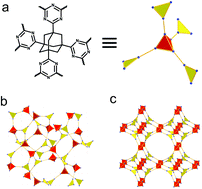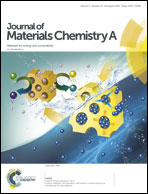Carbonization of covalent triazine-based frameworks via ionic liquid induction†
Abstract
A series of porous organic polymers (POPs) were synthesized using tetrahedral 1,3,5,7-tetracyanoadamantane as the main building block. The POP frameworks in the presence of different amounts of molten ZnCl2 as an ionic liquid were allowed to alter/enhance the Brunauer–Emmett–Teller (BET) surface areas of the POPs in the range from 760 to 1560 m2 g−1. The mechanism of the carbonization was unveiled by IR, EA and solid-state NMR; which is in situ ionic liquid induced polymerization and carbonization of the POPs.



 Please wait while we load your content...
Please wait while we load your content...